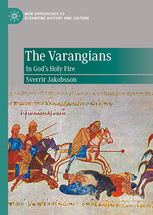A very happy Christmas from the Eastern Vikings. Enjoy the holidays and don’t forget to clash your weapons loudly in honour of your Emperor-King, for it is written:
“In describing the imperial banquet at Christmas and its attendant ceremonies, the author tells us that before the actual dinner the officials in their several sorts and ranks came to the dining hall to chant their polychronion to the emperor,
that is, they prayed in ceremonial forni that the emperor might live many years.
To each party the appropriate official replied : ‘ Our Lord the Emperor bids you many
years.’ First came the officials of the palace, each class distinguished by special robes
then in order, the Genoese of Galata, more functionaries, the Pisan colony, then the
Venetians, and after these distinguished foreigners came the Varangians. They gave
their greeting in their own language, and this was English-clashing their weapons with a loud noise.
But whether the language was really English, or whether it was Norse, and Codinus says English because there were so many English Varangians, must be left uncertain. To the Greeks all barbarous languages were much the same; and Freeman judiciously says: ‘We must remember that any distinction between English and Danish would disappear in the latitude of Constantinople.’ An acclamation was made by another set of men in the Persian language, a choir sang the Christmas canticle of Romanos, and then the banquet was served.
(from Dawkins, The Later History of the Varangian Guard.)
The Later History of the Varangian Guard: Some Notes on JSTOR

